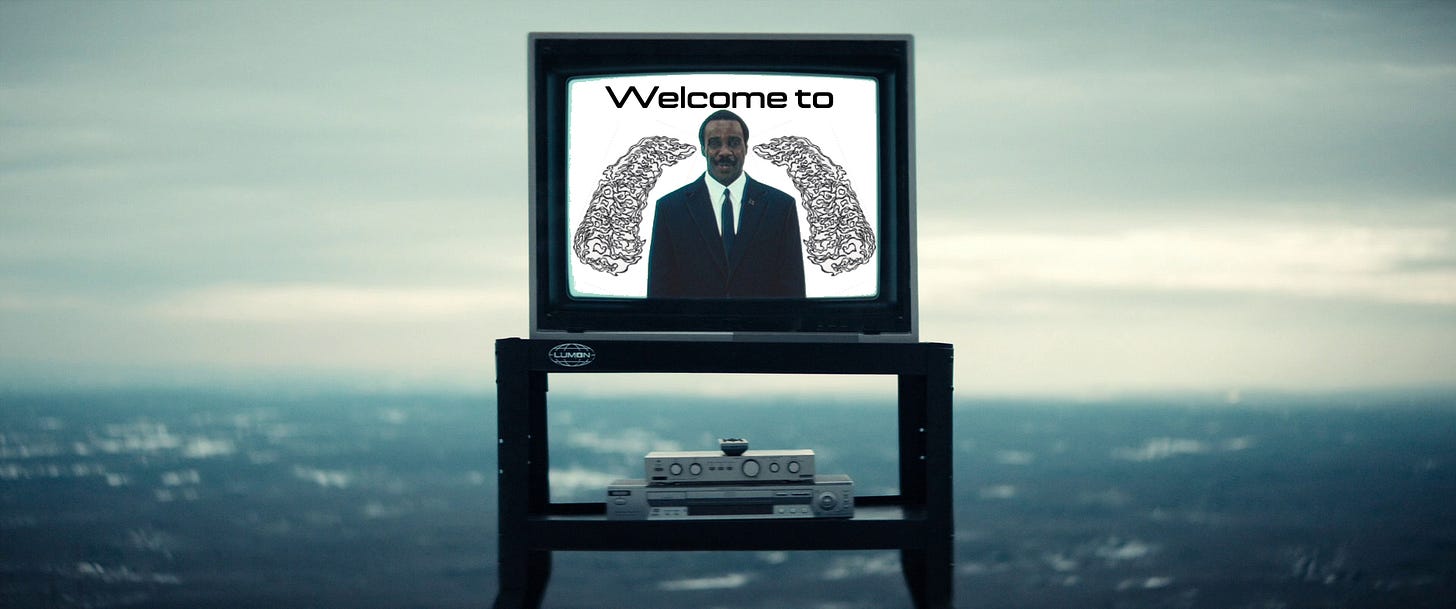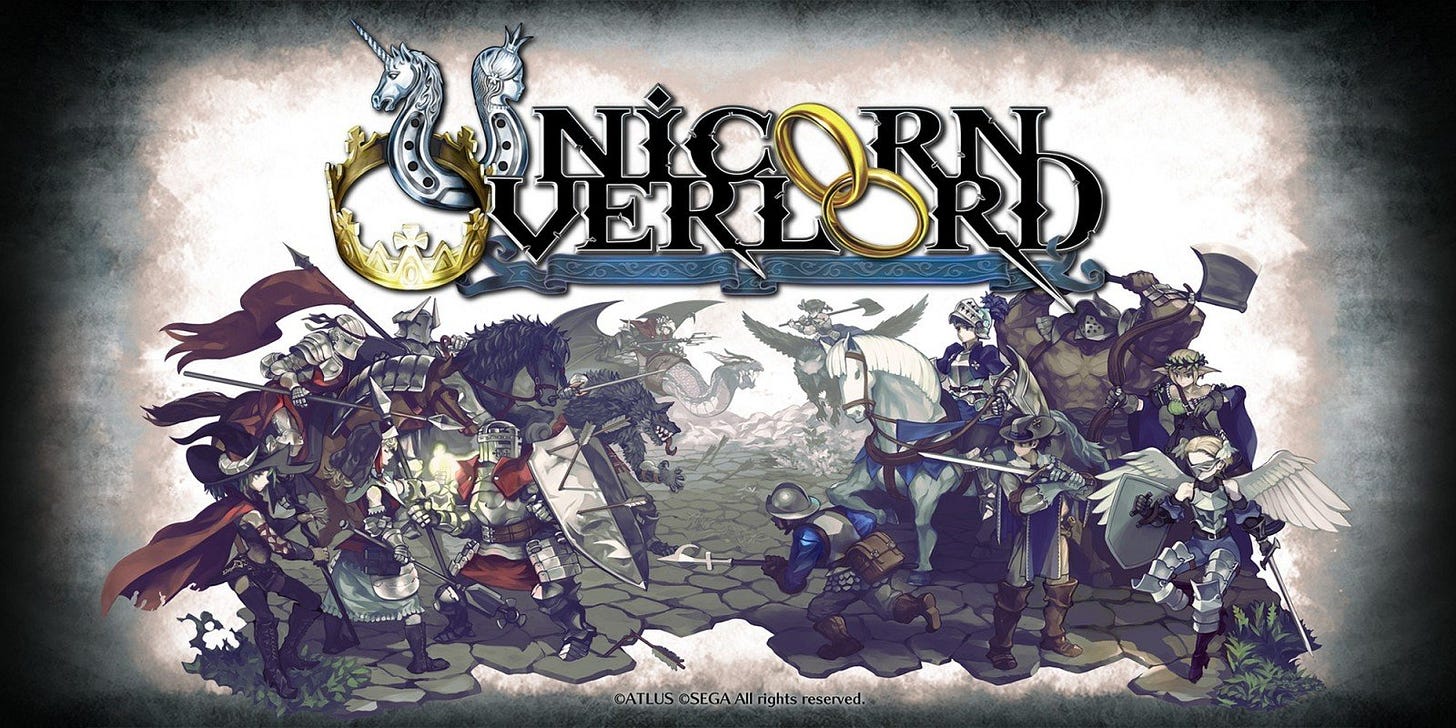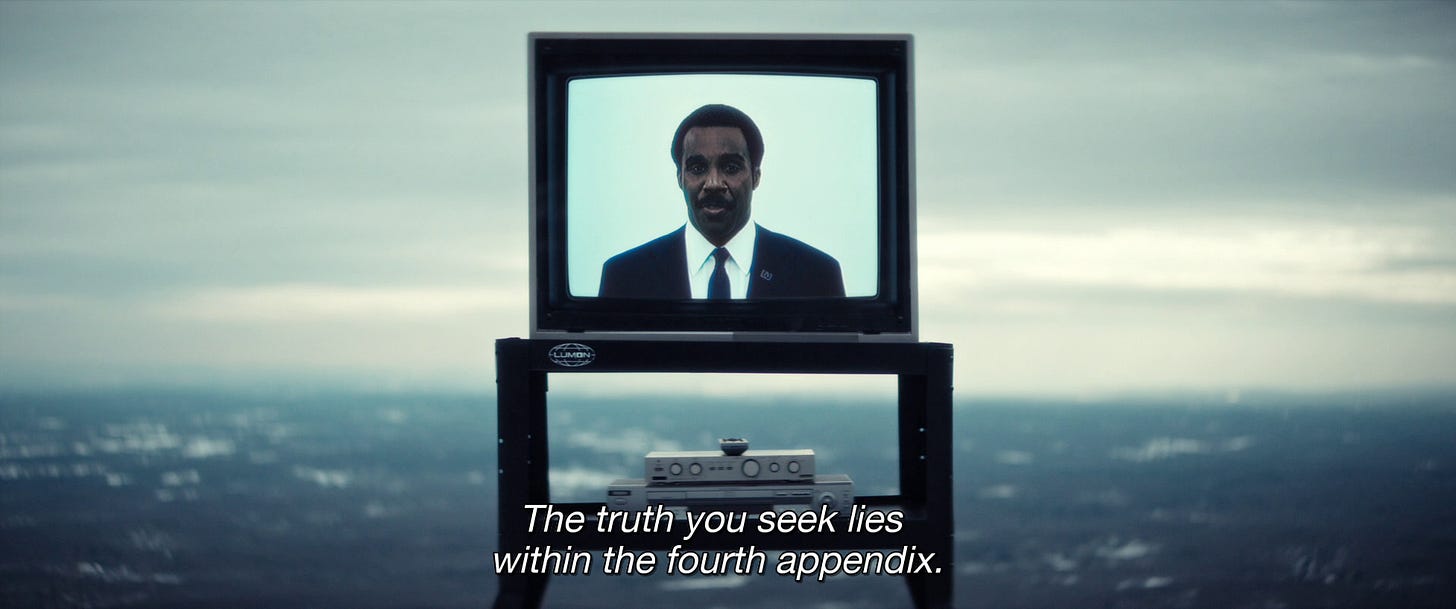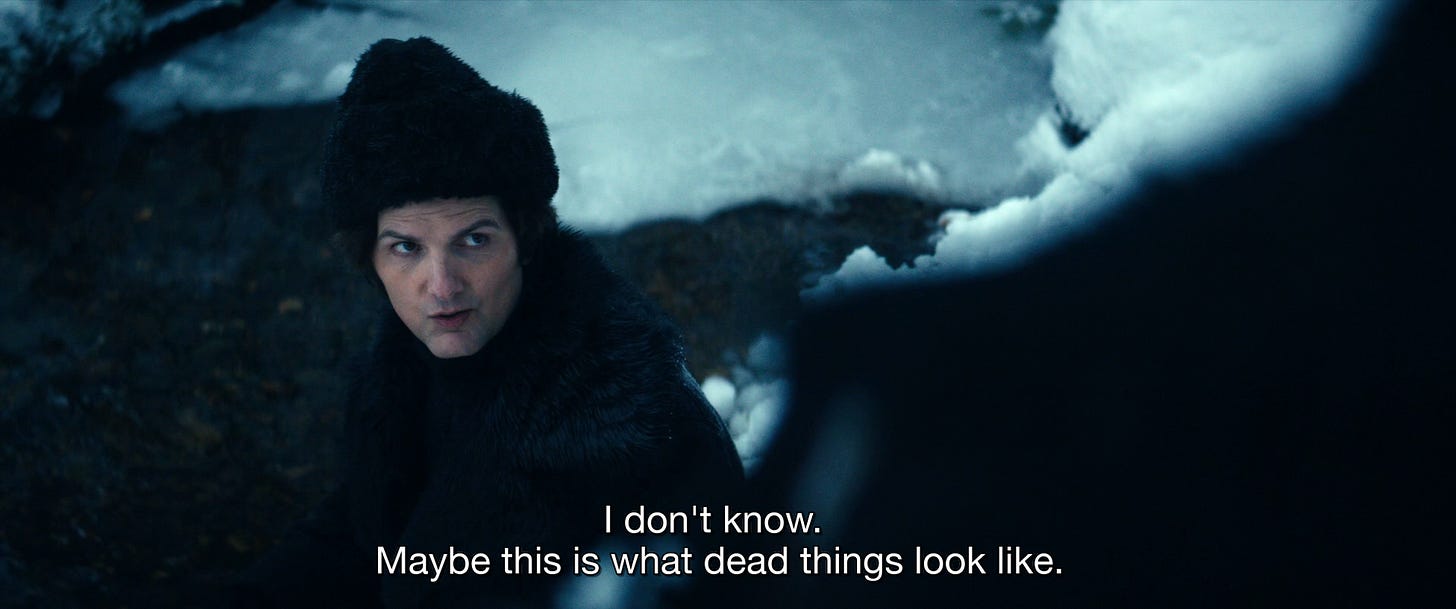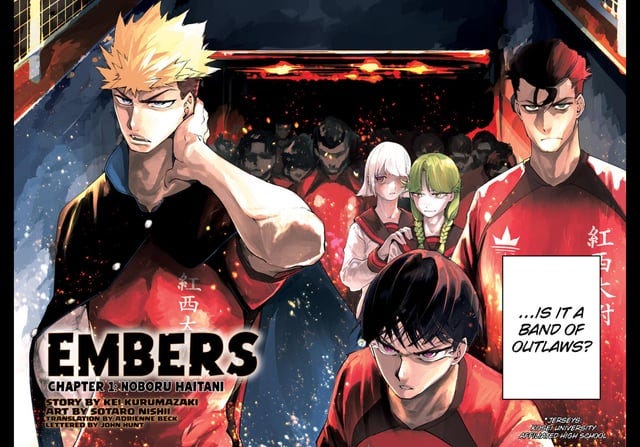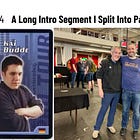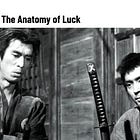Issue #366: Severance Rewrites Freud's Totem and Taboo Using a Da Vinci Code Plot Device
Before this weekend, I would have told you I’ve played every Vanillaware game except Unicorn Overlord (2024). This would have been almost true. As it turns out, I never played Grand Knights History (2011 — the U.S. localization was unceremoniously cancelled), Fantasy Earth (2006 — a pre-Vanillaware MMO), and Kumatanchi (2008 — co-developed with a doujinshi group). But now, those really are the only Vanillaware games I haven’t played. Unicorn Overlord is elite, as good as Vanillaware’s best and a rich refinement of their console real-time-strategy experiments.
I was nervous about Unicorn Overlord because it seemed complicated. And it is. But after playing it, I would sooner call it “deep” and “rewarding.” The gameplay is flexible and inspired and each battle is genuinely fun. And, if you are finding it tough, you can adjust its accommodating difficulty settings. For console RPG and strategy game fans, I highly recommend it.
What’s The Opposite of a Bottle Episode?
In Totem and Taboo (1913), Freud writes:
One day the brothers who had been driven out came together, killed and devoured their father and so made an end of the patriarchal horde. United, they had the courage to do and succeed in doing what would have been impossible for them individually. Cannibal savages as they were, it goes without saying that they devoured their victim as well as killing him. The violent primal father had doubtless been the feared and envied model of each one of the company of brothers: and in the act of devouring him they accomplished their identification with him, and each one of them acquired a portion of his strength. (Norton ‘89 Strachey trans. 176)
“Woe’s Hollow” tells a similarly archetypal story of two brothers, Kier and Dieter Eagan, who learn the folly of “wantonness” and are in turn inspired with a protestant work ethic. Kier’s embrace of economic self-making is the carrot to the stick of the fable — or branches, as Dieter’s grisly fate is spontaneous arborization1.
Kier and Dieter may have more in common with Romulus and Remus. They are sustained by nature, one kills the other to become the founder of a great something-or-other, their father is seemingly absent from their upbringing. But I am a psychoanalytic scholar, so of course I would rather relate the Eagan twins to Totem and Taboo. The absence of the father is in fact how I wager a connection between Freud’s primal father and the ur-Eagan patriarch that reigns above even Kier.
A Lacan-inflected view interprets Totem and Taboo to be largely about the transmission, regulation, and fantasies about jouissance. Referring to the quotation I opened this segment with, I write in my dissertation:
Freud exposes both the transmission of jouissance through identification and the cohesion of the siblings into a group in order to accomplish their goal. The two are part and parcel of one another. It is through the shared jouissance that the siblings, who identify with their father, are grouped together by their shared identification with an other. In the light of the idea of the “other jouissance,” what the brothers might come to find is that the enjoyment reserved for their father is not all it has been cracked up to be. By the same token, the jouissance they momentarily experience in the disposing of the father is in service of a fantasy. By supplanting their father, they do not truly inherit his jouissance, but rather encounter their distorted notion of what he experienced — thus what they encounter is a substitution, not raw, annihilating, jouissance. (Thought Crimes)
There is a necessary corollary to this, however, in a structure where there is no father, no paternal prohibition, and no phallic jouissance to redistribute. Kier’s ascendance to a godlike figure — he’s the author of his own Bible-esque appendices — or enduring cult leader at worse, happens because of the absolute absence of a father from whom one can take the name Eagan. Kier is meant to be the first in a sequence, the prime mover of the Eagans, but his relationship to Dieter as his twin suggest his positioning is as fantasmatic as the primal father’s jouissance. Even as a twin, Dieter isn’t his equal, and Kier is his brother’s keeper as he is condemned by Woe as the responsible party for Dieter’s behavior.
The proliferation of Eagan related symbolism in every part of Severance (2022) makes this obvious enough, but the power of Lumon is the power of paternal hegemony. “Woe’s Hollow” shows the mechanics of Lumon’s symbolic ascendancy, with Kier as the first Eagan, the cautionary tale of his own brother sequestered to a suppressed manuscript supposedly dictated on Kier’s own death-bed, a confession of sorts that he himself was born in the same way as any other human.
It’s no accident that the act for which Dieter is cosmically punished is masturbation. In Totem and Taboo, the prohibition of sexual jouissance is imposed by the primal father, or leader of a given “horde”:
The practical consequence of the conditions obtaining in Darwin’s primal horde must be exogamy for the young males. Each of them might, after being driven out, establish a similar horde, in which the same prohibition upon sexual intercourse would rule owing to its leader’s jealousy. (156)
Similarly, the story of Kier and Dieter positions self-satisfaction as the opposite of self-making, an opposition between expenditure and accumulation. And while Freud’s horde prohibits particular forms of intercourse, in both examples we can cut to the core of the issue: jouissance. Every societal myth, in essence, must have the same moral: one must give up some form of their jouissance in exchange for social cohesion.
This vignette from the “fourth appendix” is so evocative because of what it does not reveal. Namely, anything preceding the birth of Kier. With such an echoing absence of paternal authority, the Lumon fictions fill its gaps. For better or for worse, this structure resembles that of our own society where celebrities and politicians demand a cult-like devotion because, in a secular society, there is such a vacuum to fill. A hollow, as in Woe’s.
Using twins as a motif also relates to the themes of interconnected subjects and the unconscious, as I have discussed in prior episodes. Milchick (Tramell Tillman) calls out torches as doing the “double duty” of providing heat and light, much like the body of the severed does the double duty of existence, containing two identities rather than one. The episode even introduces distorted “shadow” selves for the “innies,” a constant companion as Dieter was to Kier.
And while the terminology is a little Jungian for my taste, the “twin” of the already divided innie would, of course, be further removed from the point of origin.
This season of Severance has brought everything back to the body: what it contains, transmits, passes from various states of consciousness to another. And how it endures. At issue in “Goodbye, Mrs. Selvig” was the authenticity of Gemma’s (Dichen Lachman) body, who Mark Scout attests to having identified as dead after a car accident, and yet who Mark S. knows as the living Ms. Casey on the severed floor. The innies are confused by the rotting corpse of a seal, to which Mark suggests “maybe this is what dead things look like.” We are left to speculate if this version of Mark is Mark S. or the previously “reintegrated” amalgam of Mark S. and Mark Scout who would, demonstratively, know what dead things look like, having identified Gemma’s body as precisely that. But, more potently, in an episode that ends with the death of Irving B., we know that in Severance, a corpse is not always what something dead looks like. Indeed, Irving B. is a death without a corpse, who dies trying to avoid the equally illegible and ambiguous death of Helly R.
Severance continues to provoke about the status of the subject and the body. The logic of its characters suggests the cohabiting consciousnesses of the body are never truly severed from one another. However, its unfolding sci-fi mystery also sets out the potential for subjectivity, or life, to endure past the expiration of a body. What dead things look like is, perhaps, the principal mystery of the season.
A few more related thoughts that didn’t really fit anywhere else in the continuous essay: the ORTBO acronym is so funny and it is hilarious they used the TV/VHS setup that is so evocative of an elementary school classroom. This episode also showcases one of Severance’s great narrative strengths: its plot elements are not just dominos to be set up and knocked down. The season hasn’t missed yet.
Weekly Reading List
https://tempestmag.org/2025/02/trump-seizes-power-in-d-c/ — Ashley Smith writes for solidaritéS, republished in Tempest, about Trump. Regardless of whether some of his points hold up to scrutiny, this is analysis about Trump’s electoral victory that I want to believe:
In reality, Trump won by only 1.5 percent of the popular vote in one of the narrowest presidential elections in history. He only won about half of the 66 percent of the electorate that bothered to fill out their ballots. So, he got support from only 33 percent of potential voters. That means that 67 percent of the electorate did not vote for him. As the great Gil Scott Heron declared in his song, “B Movie,” about Reagan’s election in 1980, “mandate my ass.”
Smith goes on to identify, correctly, the political and ideological weakness of the United States supposedly progressive political apparatus, the Democratic party:
The blame for Trump’s victory lies at the feet of the main party of U.S. capitalism and imperialism—the Democrats. It along with the dethroned Republican establishment jointly pursued U.S. hegemony over a neoliberal order of free trade globalization and enforced it with military power against any and all resistance, rivals, and so-called “rogue states.”
Along with the analysis, the piece also offers a prognosis of Trump’s presidency and what kind of resistance it will encounter. Leave it to the socialist commentators to channel the optimism of Marx.
Didn’t want to say anything about NBA trades until the RDCWorld1 video hit. Now I still don’t want to say anything, I just want you to watch this video.
Weekly Manga Pull List
I think the first time I wrote about the manga I am reading regularly was July 2023. Yeah, it was a while ago. I spotlit four titles, three of which have been cancelled. The fourth seems to be on the verge of cancellation. Then in October 2023, I mentioned a few more current manga. In October of 2024, a year later, I talked about the best ways to read manga on your phone.
Now, I want to again give my recommendations for weekly serializations — all in the Shonen Jump app.
Kagurabachi



This is at least the third time I’ve mentioned Kagurabachi (2023). It is by the grace of insomnia that I am still on this train. I was about to drop it right as the new arc ramped up introducing an inspired new character, Seiichi Samura. Shueisha is guaranteed to sell millions of stickers bearing his likeness. He may himself be bound for all time great character status — no spoilers. The “Sword Bearer Assassination Arc” is not a bad time to pick up Shonen Jump’s biggest hit in recent memory. Kagurabachi is also getting an anime adaptation from the venerable Shochiku studio.
Shiba Inu Rooms
Shiba Inu Rooms (2024) is a manga about the relationship between the inhabitants of an apartment building and the ghost of abused shibas that haunt the same building. This haunting is totally benevolent. For some reason, the dogs being ghosts also makes them able to talk. I guess talking dogs makes for easier writing. It’s neither morbid or saccharine, with the primary tension coming from a Pushing Daisies-like (2007) premise where the residents can’t make their dog ghosts too happy, lest they ascend to heaven.
Embers
Soccer manga is back. Actually, it never left. Blue Lock (2018) is one of the most outrageously successful manga series in recent memory with an equally popular anime adaptation — which I have written about twice.
But Embers (2025), the debut work from writer Kei Kurumazaki and illustrator Sotaro Nishii is equal parts Slam Dunk (1990) and Haikyuu!! (2012) which may be a little confusing as an anatomy since Haikyuu!! was already half Slam Dunk in the first place. But stop me if you’ve heard this one before: super talented but unrefined juvenile delinquent joins a formerly prestigious high school sports team inadvertently teaming up with the rival who ignited his aspirations to play whatever sport in the first place. Yes, it’s similar. Like, this similar:
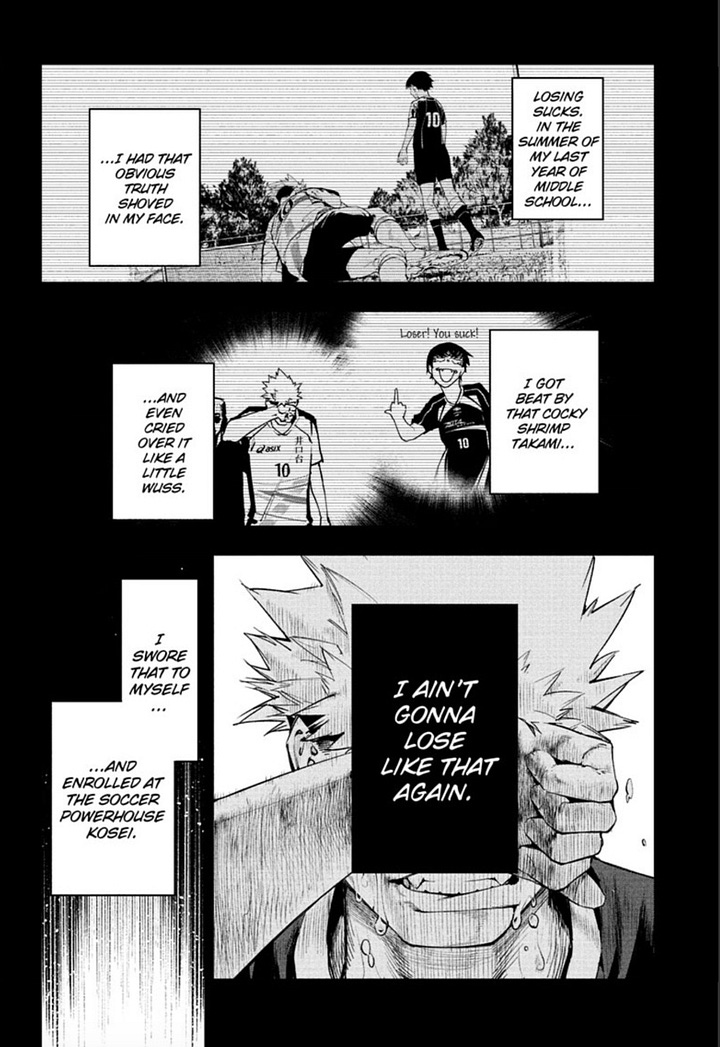

Considering that this is a plot device in two highly successful manga separated by two decades, I guess it’s fair that a manga could use it again after yet another decade. If Embers makes it into a couple tankōbon, my guess is it’ll go for about four-hundred chapters.
Until next time.
“Arborization” doesn’t actually mean to be turned into a tree, but work with me here.


